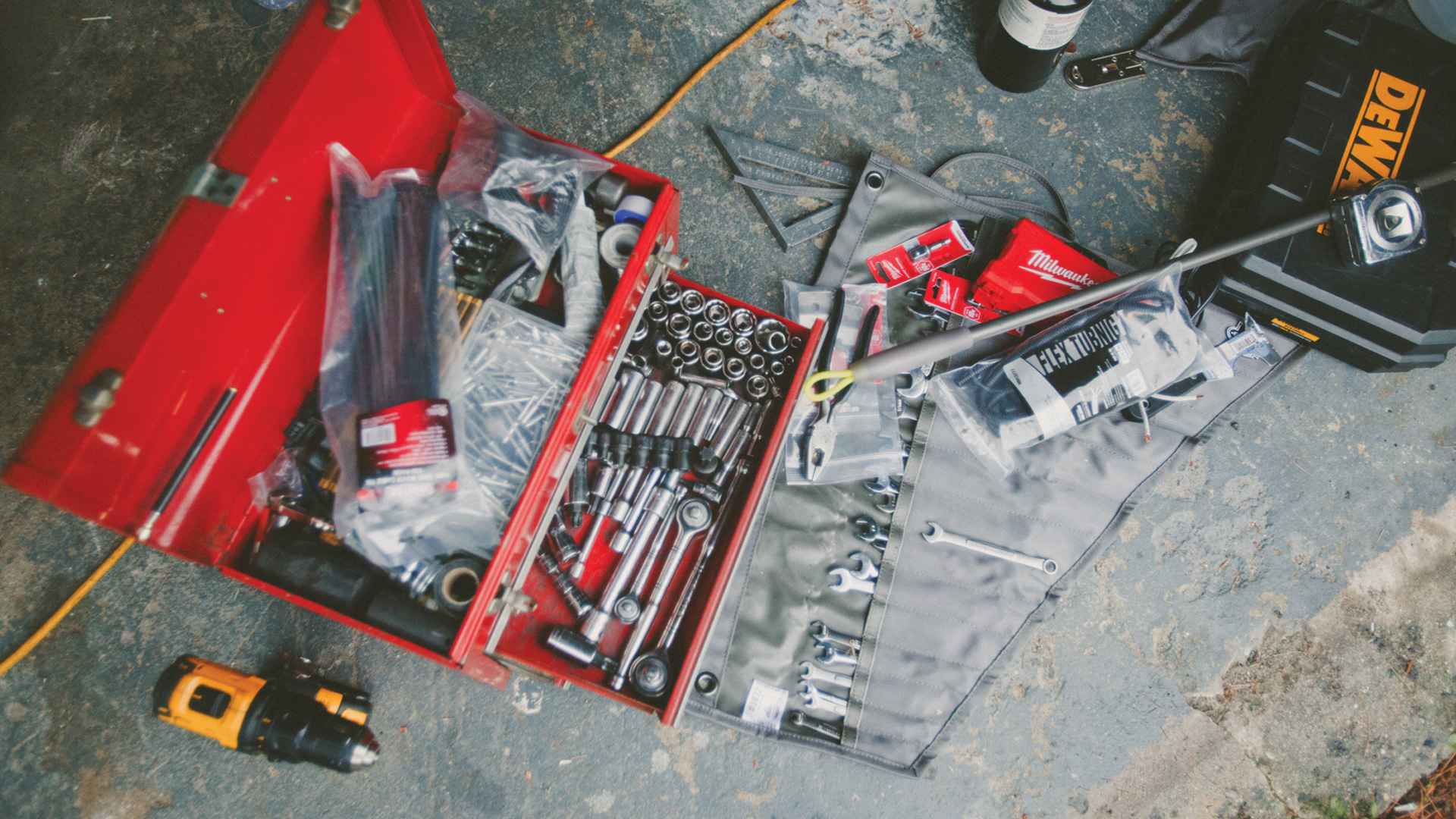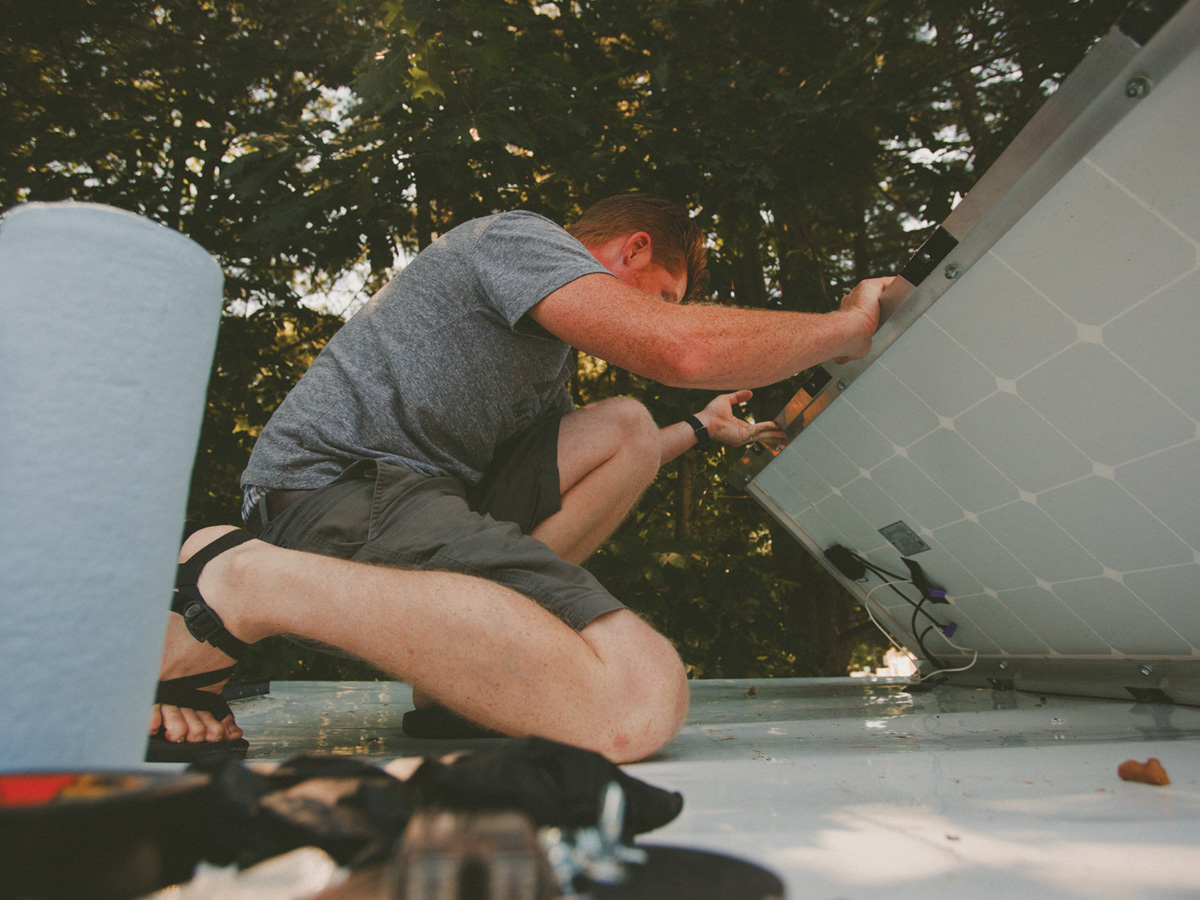

I haven’t said much about our truck. The Dodge is a glorious implement. A tool. And like any hammer or pick or spade, it does the task I’ve set before it. It has been a consumer of miles; if not a happy wanderer, then at least a dedicated one. The odometer glows at 310,000 miles and swells every day towards calamity or immortality.
That’s not to say it’s a perfect machine. It’s old, a thing made of worn and wearing parts. I’ve had a punch list five items long since we left Knoxville. Every time I knock a task off something else crops up in its place, but they’ve all been minor issues. A nail in a tire. Fuel filters and oil changes. Ball joint and king pin services. A rear axle seal. All things I can do on a patch of gravel with the meager tools I brought with us.
The 14,000 largely trouble-free miles we’ve travelled haven’t lessened my paranoia or softened my cynicism. I’m a firm believer you can drive any machine anywhere so long as you’re prepared to contend with the consequences. I know that each turn of the key pushes us towards a potential problem. I still listen intently to the ocean of squeaks and clunks and rattles that we swim through with each mile, hoping to hear the whisper that will warn me of real trouble, but there have been no real calamities. Nothing to report. Steady as she goes.

Likewise, the camper is performing better than we could have hoped. These aren’t meant to be lived in. They’re weekend toys built to be enjoyed a few days out of the year, not manufactured to withstand the rigors of day-in, day-out use. Still, ours is holding up well. The thing looks and functions as new save some ocotillo pin striping from Big Bend and a few other minor beauty marks.
And, until last week, our modifications were minor. We added a tiny stereo for impromptu dance parties with kiddo. Bolted in a couple of loops for hanging an indoor clothesline. Installed an ARB awning to provide a little shelter from the sun and the rain and the snow. We decorated with pictures and a homey tablecloth. A welcome mat.
There’s a solar panel on the roof; a big 160 watt job that feeds two AGM deep cycle batteries. Our travels have, up until this point, taken us through sunny places. The miles of coast and desert we’ve traversed have given us all the exposure we needed to keep the food in our fridge cool and charge our galaxy of necessary devices. But the east coast hasn’t been so kind. It’s been rainy days and campsites deep in cool, dark forests. Our single panel couldn’t keep up, and most days meant idling the truck to keep the camper batteries topped off.

Worse, winter is around the corner, with its shorter days and less accommodating angle of the sun. Our power woes are only going to get worse. The solution was a second panel. I am neither a competent electrician nor particularly confident in my understanding of electricity. If it can’t be comprehended with a model that could also apply to household plumbing, I’m over my head.
This has never stopped me before, and when it came time to figure my needs, I did what I’ve done in the past: read as much as I could online. There were questions to be answered: What sort of load did I anticipate? Could my charge controller handle a second panel? Would the camper wiring support the additional current? Should the panels be wired in parallel or series? What the hell’s the difference?
After a few days of bumbling about on the internet, I broke down and called the manufacturer who built the panel we already have. I told them what I was doing, professed my ignorance and begged for mercy. They set me straight and shipped a panel to Portland, Maine, our next stopover.

The install was a simple thing made hellish by my own incompetence and a sudden, lengthy rainstorm that set in only after I had punched 20 fresh holes in my roof. By the time I had everything wired up and bolted back down, it was too dark to tell if the system was working correctly. It wasn’t, of course, and the following day required removing everything to rewire the panels, this time in parallel, not series.
Throw in a few dozen trips to various hardware and supply stores, and what should have taken three hours to square away took the better part of three days. But it’s back together, and despite my perforations, the roof isn’t leaking and the new panel is doing its job.
Nothing to report. Steady as she goes.